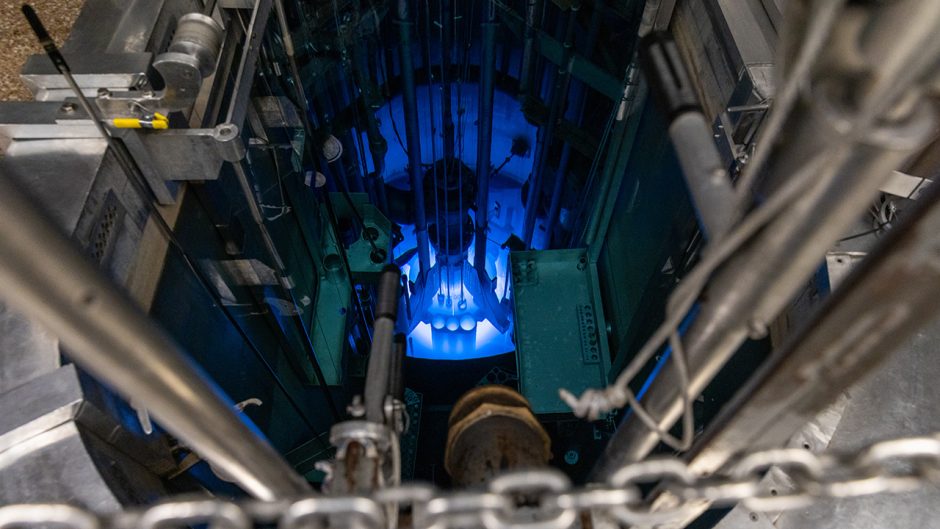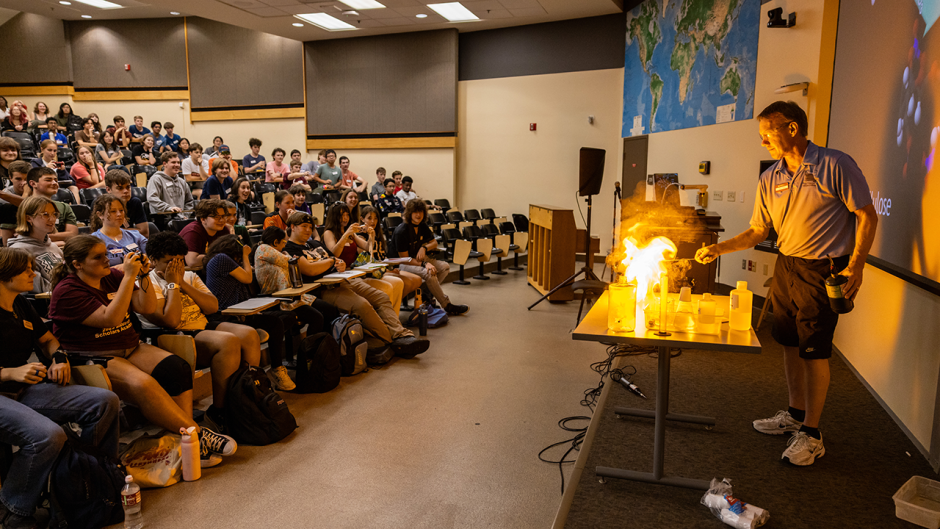Aug. 22, 2019
Contact: Eric Stann, 573-882-3346, stanne@missouri.edu

University of Missouri engineers use artificial intelligence to create custom solutions for businesses to optimize the capabilities of cloud computing.

Prasad Calyam is an associate professor of electrical engineering and computer science and the director of the Cyber Education and Research Initiative in the MU College of Engineering.
Imagine a small business develops vehicle parts for a large automotive manufacturer located hundreds of miles away. For efficiency, both businesses utilize “the cloud” to transmit the large amounts of design data — such as automobile part specifications — back and forth and develop solutions during the manufacturing process. While the large company might employ people with technical expertise to understand and handle the cloud, the small business might not have the resources to do so. A team of University of Missouri researchers is providing solutions to solve that problem.
“We have to think of utilizing the cloud much like mapping a building,” said Prasad Calyam, associate professor of electrical engineering and computer science and the director of the Cyber Education and Research Initiative in the MU College of Engineering. “How do you map a 1,000 story building that will function efficiently and reliably as expected? It must have detailed blueprints, or a plan so everyone can see how you can move from one floor to another, know where a particular office is located or even know how the building will weather extreme wind conditions. Our solution is essentially like creating blueprints for the cloud so that business applications can withstand cyber attacks or adapt to dynamic conditions — such as changes in user demands or sporadic system-based interruptions — that can impact the user’s experience.”
In this self-described “Holy Grail of several Silicon Valley companies,” the researchers provide templates — a combination of hardware and software — for any size business to use, especially small businesses without the technical expertise of larger companies. The business can ‘plug’ data into a template, upload it to the cloud, and let the cloud ‘play’ or process the data and provide flexible solutions. Calyam said businesses can benefit from their solution by only creating one template, then repurposing it for future uses. He also said the software can recommend when the template needs to be redesigned from the ground up, possibly due to a significant change in the size of the data being processed in the cloud-based application.
In the example of the automobile parts small business, the cloud allows the small business to virtually send large data files as part of a fluid and tweakable design process to the large auto manufacturer — even when the files are too large to transmit via traditional ways such as attachments in an email. Calyam’s solution will help the small business build a template for their specific data and make it easy to send the data through the cloud.
“The cloud has so many capabilities — it is always growing in terms of choices,” Calyam said. “For instance, we are trying to help provide a better user-experience for choosing the appropriate cloud resources that fit an application requirement in a cost-effective, high-performance and secure manner. Our easy-to-use tools remove the expensive guesswork for the small businesses and helping them scale-up their applications to become more profitable.”
The study, “Recommending heterogeneous resources for science gateway applications based on custom templates composition,” was published in Future Generation Computer Systems. Other authors include Ronny Bazan Antequera, a postdoctoral fellow at MU; Arjun Ankathatti Chandrashekara, a graduate teaching assistant at MU; and Reshmi Mitra, a formal postdoctoral fellow at MU who is now an assistant professor at Webster University. Funding was provided by four awards from the National Science Foundation (ACI-1246001, ACI-1245795, ACI-1440582 and CNS-1429294) and Cisco Systems, USA. The content is solely the responsibility of the authors and does not necessarily represent the official views of the funding agencies.
Editor’s Note: For more on the story, please see: Mizzou Engineering team building cloud computing ‘blueprints’


![062625_CEI Aerial View_email-cropped[29] (1)](https://showme.missouri.edu/wp-content/uploads/2025/06/062625_CEI-Aerial-View_email-cropped29-1-940x529.jpg)

